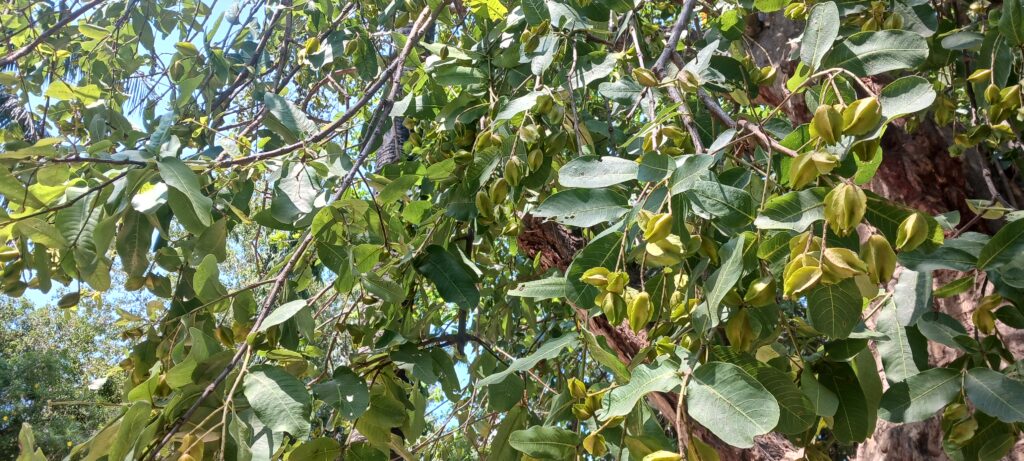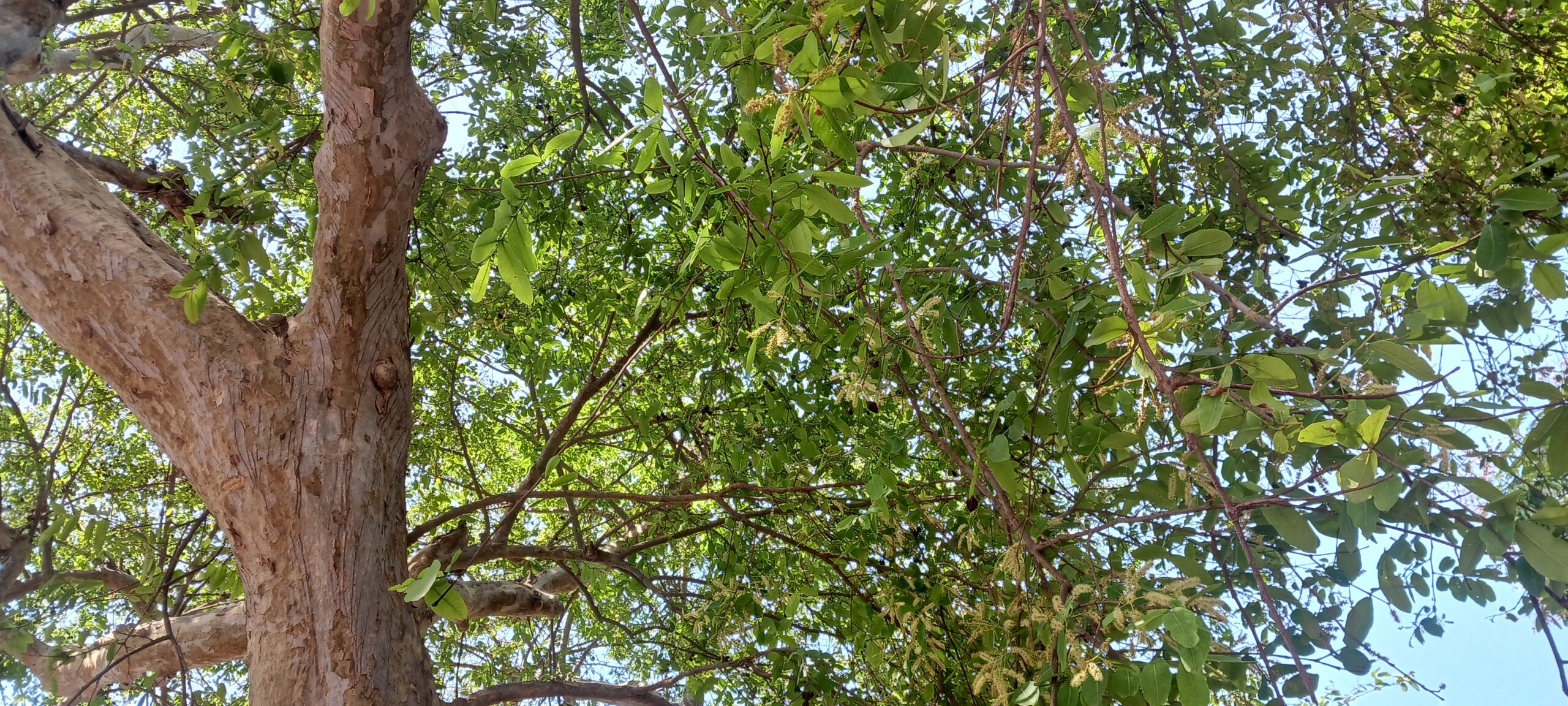Introduction

Arjun is a large sized deciduous evergreen tree with very strong and long root with often buttress trunk. Terminalia arjuna widely grown all over India in all types of soil. The Life span of this tree is 50years in favorable climate. The canopy density of this tree widely spread around the tree for which its preferable planted it in roadside plantation and its buttress trunk, root structure prevent soil erosion. It can tolerate half submergence for a few weeks. In India Arjun is one of the most religious and scared trees. Arjuna is a very common plant in the tropical region of the world. Arjun is a large deciduous tree with spreading crown and drooping branches. It is often found along the water sources, cultivated elsewhere as avenue tree. The plant naturally occurs in sub-tropical and tropical moist region of the country. Riverbank soil, streams and ravines are its natural habitat. The plant also survives in open sunny and low rainfall areas. The large spreading crown produces drooping branches. It is planted for shade or ornaments in the avenue and parks. The Arjun tree is one of the species whose leaves are fed on by the Antheraea paphia moth which produce the tassar silk, a wild silk of commercial importance.
Native
This plant is native to the Indian sub continent.
Common name
Arjun, Dhavala, Virarksha, Marutu, Sadado, Adamboe, Chola, vellai maruthu, Koha, Tella Maddi, Neer matti, Poomaruthu, Arjhan, Malabar, etc.
Tree height
Arjuna is a tree which grow up to 20 to 25mtr. It can attain a height up to 35mtr.
Stem
Its barks are thick, grey to pinkish green in color, smooth, thin coming of irregular sheets.
Leaves
Leaves are simple, opposite to subopposite, oblong or elliptic oblong, glabrous, hard, often inequilateral, margin often crenulate apex obtuse or sub-acute, base rounded or some time cordate. The petiole is short (2-4cm) long, serious with prominent two glands at petiole apex. Leaves are dull green above and pale brown beneath.
Flower
The flower is small and arranged in clusters along auxiliary spikes started flowering 6th year onward. Flowers are white and bisexual, arranged in spikes with linear bracteoles. Generally flowering seen in April-May while fruits matured from January to march. Flowers are sessile and occurs in simple or panicle spikes. Calyx is glabrous and has five short triangular lobes. Flower begins in April and extended to May with fruit ripening the following February -May nearly a year after the appearance of the flower. Generally, every third year is a good seed year. The pattern of flowering and fruiting is not markedly different in different regions.
Fruit
It has glabrous, fibrous, woody 2-3cm long fruit with five hard wings and numbered of curved veins. Fruit appears in between September to November. It is dark brown when matured, fruit mature from January to march.
Soil preference
The tree prefers alluvial loamy or black cotton soils which are loose, moist, fertile and have good drainage and water holding capacity. It grows almost in all types of soils but prefers humid, fertile loam and red laterite soils. It thrives in a variety of soil types and is often found near riverbanks and in dry, rocky areas.
Habitat
Arjun is a versatile plant in the tropical and sub-tropical region of the world. The tree prefers soils that are well drained but consistently moist, which is typically found in riverine, and flood plain environment highlights its natural habitat requirements.
Watering
Irrigation is recommended at 15 days interval in the summer season for young plantation.
Pruning
Arjun, an initial slow grower, later grows very fast to attain 2-3m height in 3years. Pruning is required to remove weaker shoot when forking takes place due to frost damage.
Propagation
Arjun is propagated by seeds. The number of fruits per kg seeds varies from about 200 to 1200 depending on the size of the fruit. The seeds should be pre-treated by soaking them cool water for 48 hours. Alternatively, the seeds may be soaked in boiling water and allow to cool. The seeds should remain in soaked for 24hours. we can store this seed up to 6-12 months in airtight container. The seeds are sown in the nursery beds and germination commence from 8-12 days and is completed in 7-8weeks. The germination of pre-treated seeds is about 90% while that of untreated seeds is 50%-60%. The 10-month-old seedling is suitable for plantation in the field. Propagation gives better result when seeds are used. The seeds can be collected in early summer from tree that are more than six years old. Ripe fruits are collected in March by looping the branches of from the ground previously swept clean. The seeds are viable for at least one year when stored in sealed tins. About 18month old sapling transplanted in the field in pits in July -August at a spacing 4mtr X 4mtr.
General Use
It makes excellent charcoal and firewood, with caloric value of 5030Kcal/kg and 5128Kcal/kg for the sapwood and hardwood respectively. The sapwood is pinkish-white, and the heart wood is brown to dark brown, very hard, lustrous and strong. Timber is locally used for carts, agricultural implements, water troughs trap. Boat building, house building, tool handles and jetty piles etc. It is widely planted for raising tassar silkworm and livestock fodder in India where leaves are heavily looped. The bark containing large amount of lime, is often brunt to produce lime for chewing with betel.
Medicinal Uses
Every part of this plant has useful medicinal properties. The bark of this tree is used as herb by ancient physician. The bark is removed from the well grown trees preferable 10th yrs. onward. The bark of the arjun is astringent, sweet, acrid, cooling, aphrodisiac, urinary astringent and expectorant but chiefly used as cardio tonic improve blood supply to heart. Its bark decoction is being used in Indian subcontinent for anginal pain, hypertension, congestive heart failure and dyslipidemia, based on the observations of ancient physicians for centuries. Decoction of the bark has been used as ulcer wash, while bark ashes have been prescribed for snake bite and scorpion sting. Terminalia is most commonly used for heart ailment including heart failure and chest pain. Terminalia contains ingredients that helps stimulate the heart. It might also help the heart by lowering cholesterol and blood pressure. chest pain (angina) some research shows that taking terminalia by mouth with conventional medications improves symptoms in people experiencing chest pain after a heart attack. its cardiotonic activity which strengthen the heart muscles is also described many ayurvedic books. Arjun powder has a long history of safe use and can be taken once a day, about half a spoon, boiled in water like your regular cup of tea. The powder can be boiled on low heat with mix of one cup of milk and cup of water till the water evaporated. This is then cooled strained and consumed for the general wellbeing of the heart. Arjun barks benefits as being heart healthy, improving blood quality, and preventing and removing swelling and clogging apart from promoting other cardiac function. The bark reduce cholesterol, blood pressure and blood glucose all of which can negatively impact heart health. Terminalia arjun is possible safe when taken by mouth for 3 months or less. Arjun is rich in potassium, which is good for heart, in addition to a number of other goodies like arjungenin, arjunlic acid, polyphenols and gallates. Several human studies have shown that arjun bark extract are useful to treat heart disorder like chronic stable angina (pain in heart). In fact, a research paper in an Indian journal, found it is useful in case of cardiac failure. Laboratory studies on arjun have also demonstrated high antioxidant activity, beside promoting nitric oxide formation in the wall of blood vessels, which gives necessary elasticity to the arteries, preventing hardening. Early research shows that taking terminalia by mouth might improve cholesterol in people with heart disease. Terminalia arjun is possible safe when taken by mouth for 3months or less. But do not use terminalia arjuna without medical supervision. It might affect your heart.
Pests & diseases
Aphids attack tender leaves and form galls on it. Spraying of biopesticide like Azadirachtin control this pest.
Chemical constituent
The main chemical constituent that contributes to the amazing properties of this herb are Arjunic acid, tannis, arjunones, Arjunetin, Arjun glycosides 1& 2, Arjunic and Arjunolic acid, Betullinic acid, Ellagic acid etc.
Classification
Kingdom:-Plantae Phylum:– Class:– Family:- Combretaceae Genus:- Species:-

